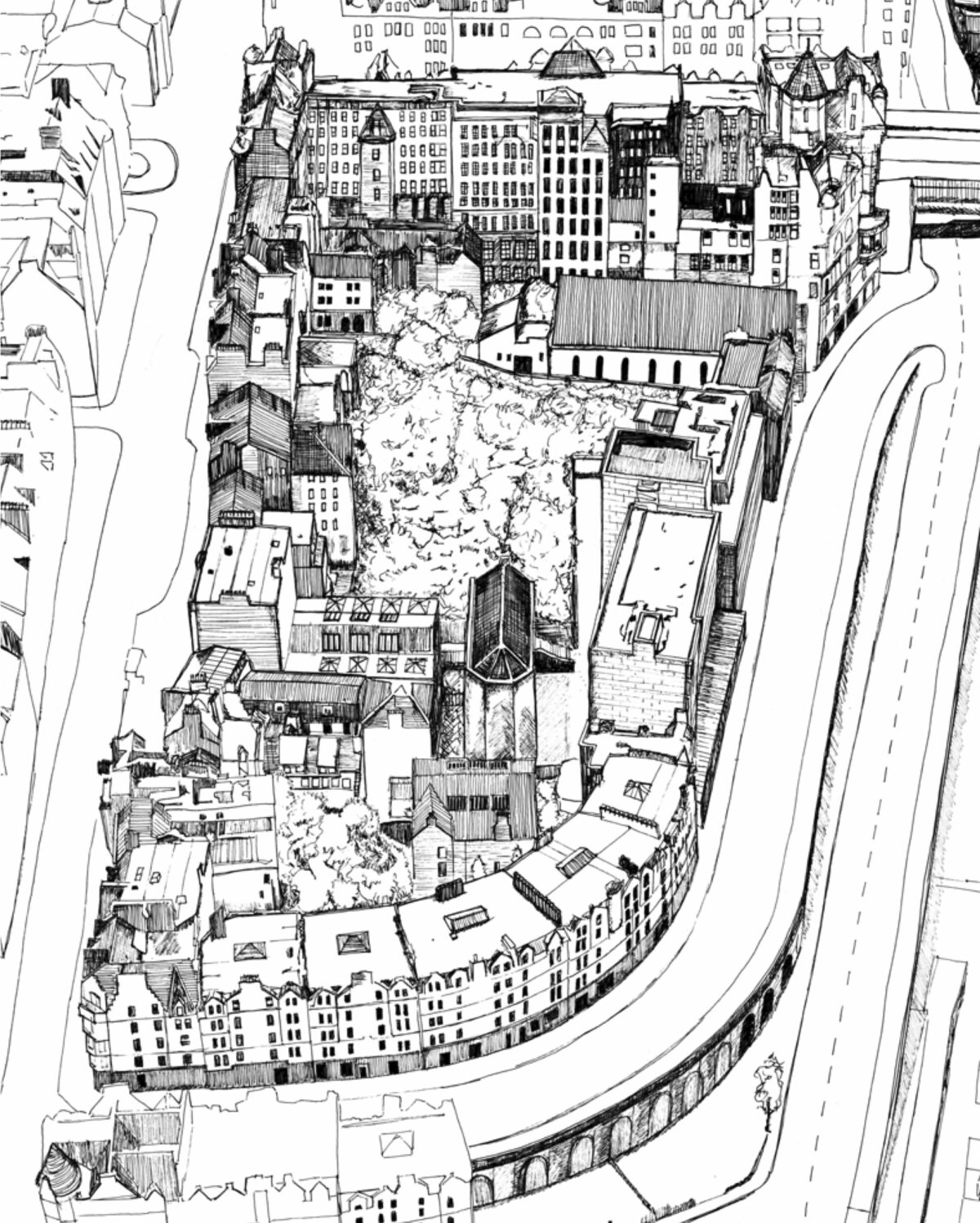Dis-Close documents explorations on Edinburgh, the capital of Scotland. The city’s distinctive natural land- scape of steep hills and deep valleys have shaped the city throughout time. Resulting in a particular topography and atmosphere. Challenges and restrictions of this dramatic landscape have caused the emergence of a unique urban fabric. These unique features are most present in the medieval Old Town. (read more below the link)
Full of twisting, narrow roads and seemingly never-ending staircases; navigation between different areas and levels of this part of the city can often be surprisingly difficult. These well-preserved characteristics have led the city to achieve Heritage Status in 1995. Obtaining this status has partly facilitated the rapid growth of the tourism industry in recent years, causing many locals to flee the Old Town. In addition, general negligence on the part of the city’s planning department and ongoing debates between commercial developers and Heritage preservation, are further aggravating the slow deterioration of Edinburgh’s special character.
A network of steep, narrow alleyways called, The Closes are a major part of the unique character of the urban fabric. During the Middle Ages, urban growth was constrained by the physical barriers. Due to the rapidly increasing population during the 17th century, there was thus no other option but to densify within the plotted boundaries of the city. Some of the tallest houses in Europe at the time, emerged on the narrow backlands of the main street. This gave many of the Closes a canyon-like appearance and atmosphere.
Exploring the Closes can tell us a lot about the specific localities of the place at different points in time. Through making documents that examine the spatial conditions present in the Closes I aim to uncover how the evolving geographical, historical and social con- text have shaped the urban fabric throughout the past centuries.

